Strong rallies in the prices of global financial securities over the last six months mean it’s worth considering taking profits, especially given many tailwinds and risks still exist. Such securities have been trading generally with macro conditions and the threat of tail risk events (events with lower probability but significant impact) with the market responding positively to the progress made on a variety of issues over the last six months. Companies noted in this article include: Morgan Stanley, Societe Generale, BNP Paribas, Barclays, Rabobank and AXA SA. We conclude by suggesting switch opportunities.
Europe
During the year, there has been much progress in regard to the European crisis – which has been a key driver of global financial sector risk. The following have had an impact on sentiment and have lead to a degree of medium term optimism:
- In mid-June 2012, the 27 European Union leaders (not just the 17 Eurozone heads of state) agreed the EU has flawed financial architecture – and that they need and are going to fix it. They then agreed to four key elements:
- Banking union,
- Moving towards various degrees of fiscal union,
- Increasing the amount of economic union in the Eurozone and the European Union and
- Buttressing that process with moves toward political union as well
- Impressively, Eurozone policymakers have demonstrated that they will do whatever it takes to avoid worst case scenarios. While they have not been proactive, they have acted when necessary to avoid potentially dramatic scenarios such as a country exit. They have also set important precedents, for example far-reaching policy commitments and financial backing to preserve the financial system
- There has also been more market support for peripheral debt with investor positions moving back towards neutral/ slightly long. As tail risks dissipate, real money investors have been pushed back into the periphery, not so much because of improving fundamentals but because of the search for yield. With safe havens such as Bunds or US Treasuries unlikely to continue performing as they have, investors are forced to look elsewhere for performance, and in doing so providing much needed financing to such market segments
Impact
Global financial sector securities have been trading to some extent as though the crisis is over. This however is more a reflection that investors no longer feel the need to plan for worst case scenarios such as a break-up of the union or a chain reaction of countries loosing market access with no effective backstop. In this regard clearly the situation has changed substantially. However Europe continues to struggle with low economic growth, high unemployment and weak overall fundamentals. In relation to this the crisis clearly is not over.
It may therefore be an opportune time for investors to switch out of securities which have benefited from this rally and maybe also to think about diversification away from volatile global financials - especially given the multiple stumbling blocks and agreements which now have to be navigated and implemented:
- In Europe, there is an ambitious agenda of 17 or 27 countries trying to agree and execute a 10 year plan of redesigning and making stronger the whole economic fabric of the economic and monetary union. As well as trying to manage the economy out of recession
- In the US there is the current ‘fiscal cliff’ threat and longer term issues such as entitlement reform and debt management
- Banks also still generally have a long way to go to fully adapt to the new market and regulatory environment in which they operate
However it is also possible that 2013 could be the pivotal year if Europe makes sufficient progress and the US reaches bipartisan agreement to reduce the deficit and avoid the fiscal cliff. Ultimately therefore, the performance of financials in 2013 is likely to be driven primarily by the decisions of policy makers.
Securities
The following graphs show the price appreciation of senior and Tier 1 hybrid securities for global financials which have benefited from the rally.
Senior bond examples

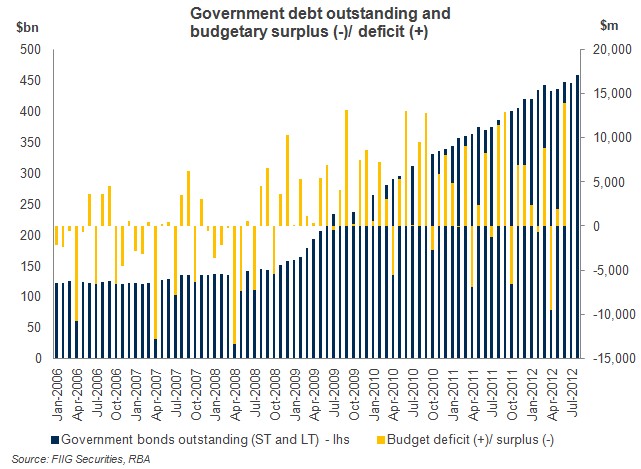
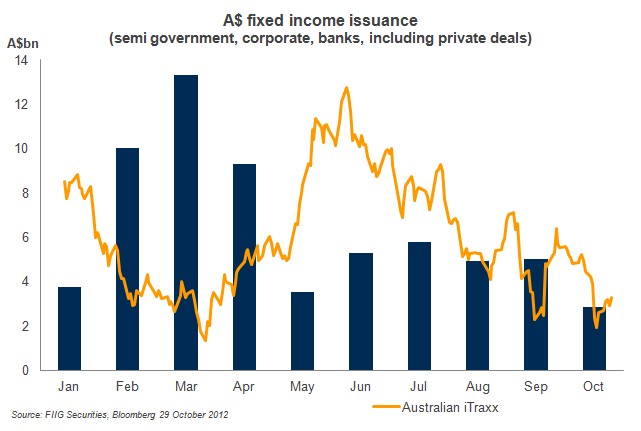
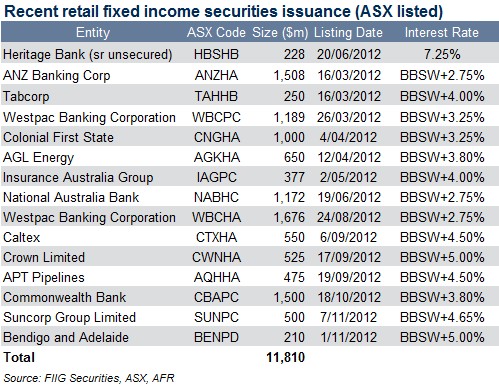
Tier 1 hybrid examples
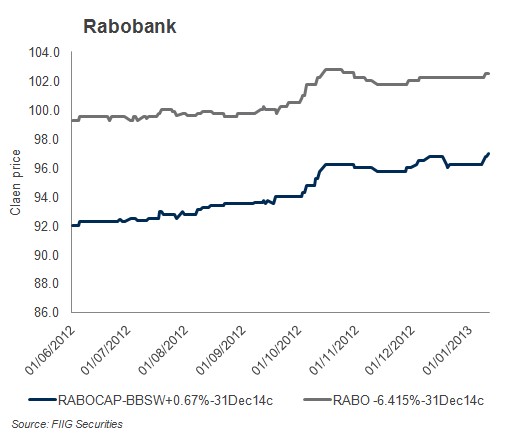
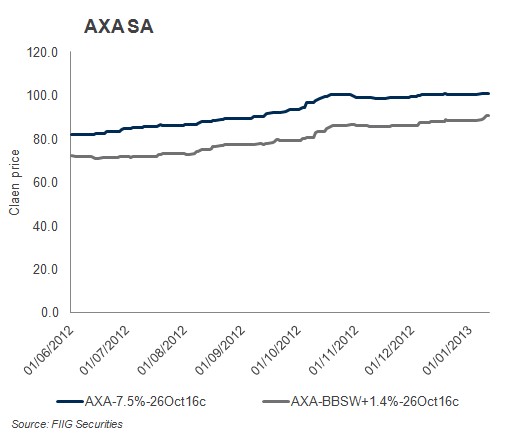
Possible switch ideas
Table 1 shows some examples of switch opportunities that represent diversification away from the global financial sector. Discussion of some options:
- Domestic financials, while in general terms have also seen some price appreciation, may suit some investors seeking diversification away from international volatility. Tier 1 Hybrid and subordinated debt in these names offer some attractive returns.
- Also included are examples of some inflation linked bonds (indicated by ‘ILB’ as the coupon type) which may be suitable for those seeking a real yield protected from inflation. These examples are from solid credits such as Southern Cross Airports (Sydney Airport), the Commonwealth Bank and Envestra (natural gas infrastructure)
- Some of our favoured infrastructure deals are also included offering a range maturities and returns; DBCT Dalrymple Bay (the world’s third largest coal terminal with predictable and stable cashflow through take or pay contracts), Praeco (the consortium contracted to build and maintain the Australian defence force joint operations command with revenue coming from the government) and DBNGP (Dampier-Bunbury natural monopoly gas pipeline with around 80% long dated take or pay contracts)
- Queensland Treasury Corporation offers some longer term investments with attractive yields and the security of a state government guarantee
- Silver Chief, a security originated by FIIG, has a 26 year history in the rental equipment business and offers a high return
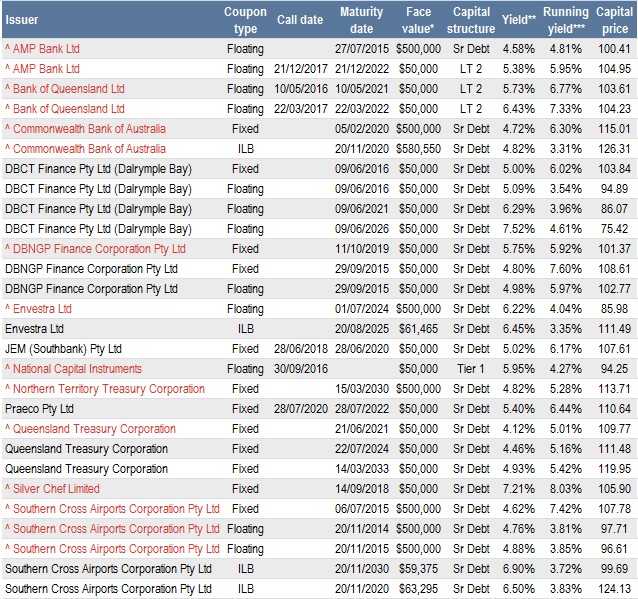
*Current face value on inflation linked bonds represents the inflation adjusted face value.
**Yield for floating rate notes is the swap rate to maturity/call plus the trading margin.
**Yield for ILB equals Real Yield plus a current inflation assumption of 2.5%.
***ILB running yield quoted is a commencing value, given current indexation, but will accrete up with inflation.
^Must be a wholesale client to purchase these bonds.
All prices are a guide only and subject to market availability. FIIG does not make a market in these securities.
Table 1
Please speak to your FIIG contact for further information and all available options.